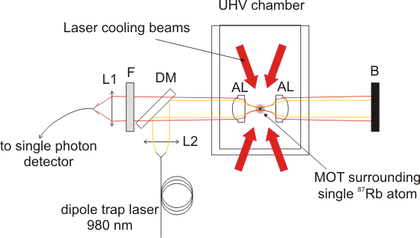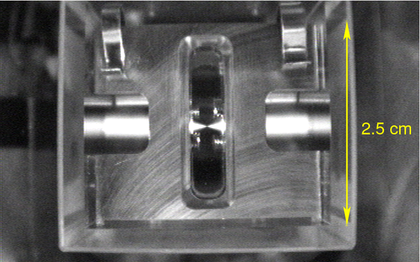Highlights
The shadow of a single atom
Take a laser (not a very powerful one, but still, emitting more light than a standard pointer) and shine the light on a single atom. Do you expect to see any effect? Even if the light is focused down to a waist of 1 micrometer, the size of an atom is one thousandth of that. So you would expect roughly 1/1000 of the light, or 0.1%, to be deflected. After all, you don't notice the shadow of mosquitoes flying against the lights of a stadium.
Still, if you choose your light well (right frequency, right polarization), the atom becomes like an antenna. Now, think of antennas on top of houses: they are quite small and thin, but they capture signals very well. The atom does the same: in our experiment, we proved that it captures 10% of the light! If you know some optics, you will also appreciate another of our results: in an interferometer, a single atom acts like a delay line that causes a change of phase by 1 degree.


While we are working to improve the experiment and get even higher scattering rates, you can browse our publications and preprints:
- The scattering experiment: M.K. Tey, Z. Chen, S.A. Aljunid, B.Chng, F. Huber, G. Maslennikov, C. Kurtsiefer, Nature Physics 4, 924-927 (2008); preprint available
- The theoretical modelling: M.K. Tey, G. Maslennikov, T.C.H. Liew, S.A. Aljunid, F. Huber, B. Chng, Z. Chen, V. Scarani, C. Kurtsiefer, New J. Phys. 11, 043011 (2009)
- The phase experiment: S.A. Aljunid, M.K. Tey, B. Chng, T.C.H. Liew, G. Maslennikov, V. Scarani, C. Kurtsiefer, preprint available






